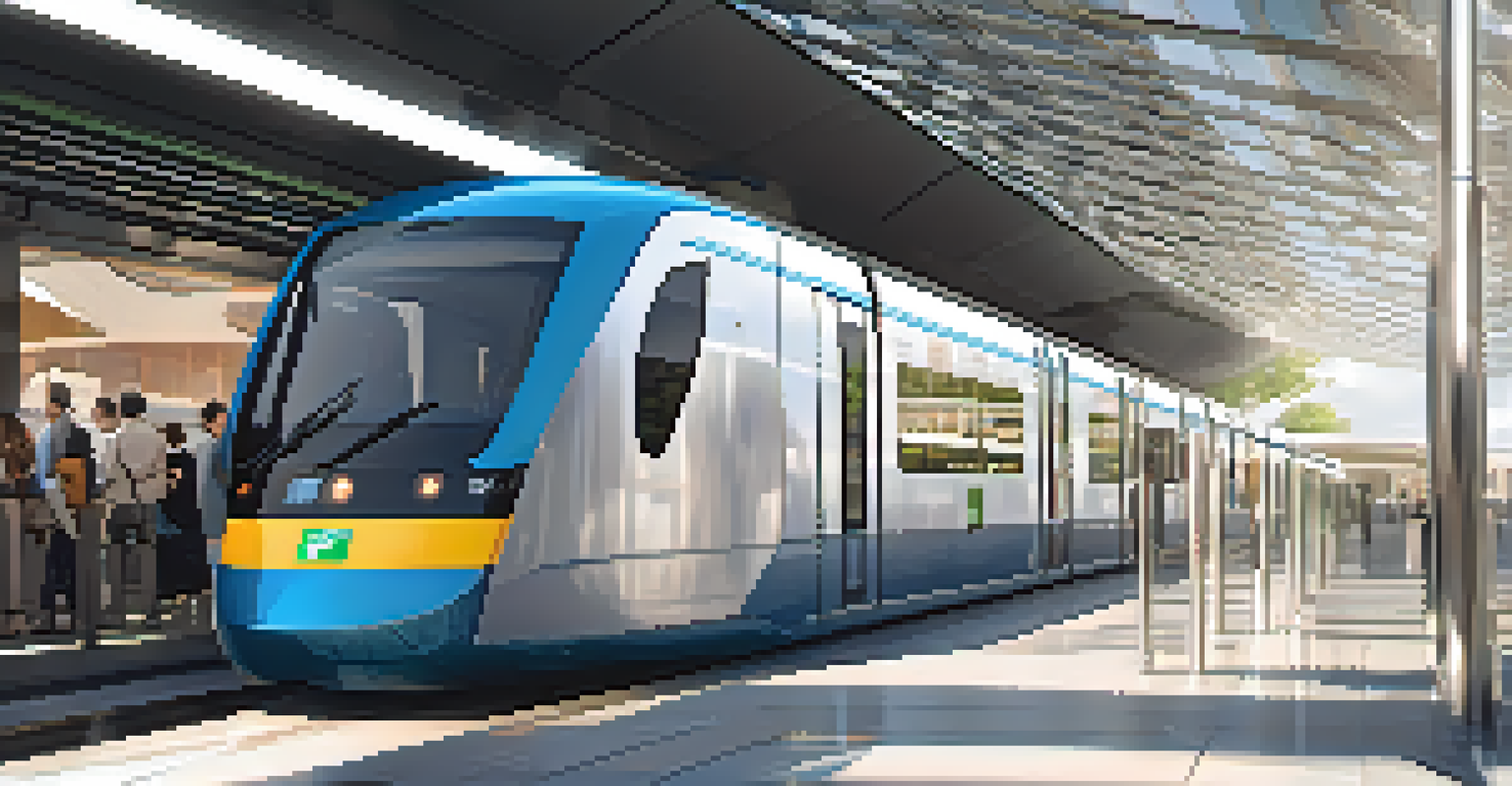The Future of Light Rail: Expansions in Austin's Transit Plan

Understanding Austin's Current Transit Landscape
Austin's public transit system has long faced challenges with congestion and limited options. With a growing population and increasing traffic, the need for efficient transportation solutions has never been more urgent. Currently, the city relies heavily on buses, which, while useful, often suffer from delays due to road traffic.
Public transportation is the backbone of a healthy city. It connects people, reduces congestion, and fosters community.
As residents opt for more sustainable commuting options, the demand for an expanded light rail system is becoming clear. Light rail presents a solution that not only alleviates congestion but also promotes eco-friendly travel. By integrating a light rail system, Austin can improve overall transit efficiency.
This transition signals a shift toward a more modern, interconnected city, where residents can rely on a dependable transit option. As we look to the future, it’s essential to examine how these expansions will reshape Austin’s transportation dynamics.
Key Features of the Proposed Light Rail Expansion
The proposed light rail expansion in Austin is designed to enhance connectivity across the city. Planned routes will link key areas such as downtown, the airport, and various neighborhoods, making it easier for residents to travel without relying on cars. This connectivity aims to create a more integrated urban experience.

Another exciting feature is the introduction of modern, energy-efficient trains that reduce carbon footprints. This aligns with Austin's commitment to sustainability and reducing greenhouse gas emissions. By prioritizing green technology, the city is setting a precedent for environmentally responsible infrastructure.
Light Rail Expansion Enhances Connectivity
The proposed light rail system aims to improve connectivity across key areas in Austin, reducing reliance on cars.
Additionally, the expansion will include various accessibility features, making public transport more user-friendly for everyone. This focus on inclusivity ensures that all residents can benefit from the improved transit options, fostering a sense of community and shared space.
Community Impact: Engaging Austin's Residents
Engaging the community is vital for the success of the light rail expansion. City planners have initiated public forums to gather feedback and address concerns, ensuring residents feel included in the decision-making process. This participatory approach builds trust and helps align the project with the needs of the community.
Sustainability is no longer about doing less harm. It's about doing more good.
Moreover, the light rail expansion is expected to stimulate local economies along its routes. Businesses located near light rail stations may see increased foot traffic, leading to more sales and job opportunities. This economic boost can contribute to a thriving local culture, making neighborhoods more vibrant.
Furthermore, the expansion will likely enhance property values in areas near the light rail. As convenient transit options become available, demand for housing in those neighborhoods may rise, benefiting both homeowners and the city’s overall economy.
Funding the Light Rail Project: Challenges Ahead
Funding remains one of the most significant challenges facing the light rail project. It requires a substantial investment, which can come from various sources, including federal grants, state funding, and local taxes. Balancing these financial elements is crucial to ensure the project is not only viable but sustainable long-term.
Moreover, public perception of funding methods can influence community support. Residents may have differing opinions on using tax dollars for public transportation projects, emphasizing the importance of transparent communication. Educating the public on the benefits of light rail can help garner support for necessary funding.
Community Engagement is Crucial
Involving residents in the planning process is essential for building trust and aligning the project with community needs.
Ultimately, finding a reliable funding model will be essential to keep the project moving forward. As Austin's leaders navigate these financial waters, they must remain focused on the long-term benefits that a robust light rail system can provide.
Technological Innovations in Light Rail Systems
The future of light rail in Austin is not just about the tracks and trains but also the integration of cutting-edge technology. Modern light rail systems are incorporating real-time data and smart technology to enhance the commuter experience. Features like mobile apps for tracking train schedules can simplify travel for residents.
Additionally, advancements in energy efficiency, such as regenerative braking systems, can make light rail operations more sustainable. By harnessing energy during braking, these systems can reduce overall energy consumption. This focus on technology aligns with Austin's goal for a greener future.
The use of artificial intelligence and machine learning in transit planning is also on the rise. These technologies can optimize routes and schedules based on traffic patterns and passenger demand, ensuring that the system meets the community's needs effectively.
The Role of Policy in Supporting Transit Expansion
Effective policy is critical for the successful expansion of Austin's light rail system. Legislative support can help streamline processes such as land acquisition and environmental impact assessments. By removing bureaucratic barriers, the city can expedite the construction and implementation phases.
Moreover, policies that promote public transportation use can encourage more residents to embrace light rail as a primary commuting option. Incentives like reduced fares or subsidies for low-income riders can make public transportation more accessible and appealing. This shift can help foster a culture of public transit use in Austin.
Sustainable Funding Challenges Ahead
Securing reliable funding sources for the light rail project is vital for its long-term viability and success.
Collaboration between city officials, transportation agencies, and community organizations will be vital in shaping supportive policies. By working together, these stakeholders can create a cohesive vision for Austin's transit future that reflects the needs and desires of its residents.
Looking Ahead: The Vision for Austin's Transit Future
As Austin looks to the future, the vision for its transit system extends beyond just light rail. The overall goal is to create a multimodal transportation network that includes buses, cycling paths, and pedestrian-friendly infrastructure. This comprehensive approach aims to cater to the diverse needs of the city's growing population.
Incorporating light rail into this vision is crucial for reducing traffic congestion and enhancing mobility. By providing reliable and efficient transit options, the city can encourage more residents to leave their cars at home. This shift is essential for creating a more sustainable urban environment.

Ultimately, the future of light rail in Austin represents more than just transportation; it reflects the city's commitment to innovation, community engagement, and sustainability. By investing in this vision, Austin can pave the way for a more connected and thriving urban landscape.